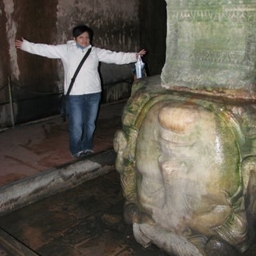
Carmen Mendoza
Senior Web Producer at The Chronicle of Higher Education
#Andean world #traveler. Loves #soccer, #books, #cycling, & #cats. Teach #tolerance & embrace #diversity. Senior Web Producer @Chronicle
Articles
-
2 months ago |
chronicle.com | Graham Vyse |Carmen Mendoza |Maura Mahoney
It’s hard to get today’s college students to read. Many are unable — or unwilling — to do it, especially if they’re assigned longer texts. When they are reading, they’re struggling with comprehension and analysis. Professors say it’s much worse than what they’ve encountered with students in the past. What’s causing this change? And how are instructors responding to it?
-
Mar 3, 2025 |
chronicle.com | Graham Vyse |Erica Lusk |Maura Mahoney |Carmen Mendoza
You keep hearing about the “demographic cliff” higher education is facing. It’s an ominous-sounding term for the steep decline in traditional-age students projected to start by 2026, with the number of new high-school graduates expected to fall by about 13 percent by 2041. The consequences of the cliff will vary across geographic regions and types of institutions, yet there’s widespread worry about its effect. How did higher ed get to this precipice? And what does it mean for students?
-
May 13, 2024 |
chroni.cl | Maura Mahoney |Erica Lusk |Carmen Mendoza
Weak educational achievement runs like a fault line through rural American economies. Eighty-five percent of American counties with low educational attainment are rural, and far fewer young adults in rural areas are enrolled in higher education than those in urban or suburban areas. This educational disparity has far-reaching consequences, as the rural counties with the lowest levels of educational achievement have the highest levels of poverty, unemployment, and population loss.
-
Apr 18, 2024 |
chronicle.com | Maura Mahoney |Erica Lusk |Carmen Mendoza
Weak educational achievement runs like a fault line through rural American economies. Eighty-five percent of American counties with low educational attainment are rural, and far fewer young adults in rural areas are enrolled in higher education than those in urban or suburban areas. This educational disparity has far-reaching consequences, as the rural counties with the lowest levels of educational achievement have the highest levels of poverty, unemployment, and population loss.
-
Nov 13, 2023 |
chronicle.com | Erica Lusk |Katherine Mangan |Carmen Mendoza |Michael Theis
Prison education has long been a part of America’s culture. For the better part of the 20th century, formal education programs played an important role in efforts to rehabilitate incarcerated individuals. Yet paying higher-education fees has always presented challenges. Difficulties increased drastically in 1994 when the U.S. government, believing that taxpayers should not cover college costs for those convicted of crimes, stripped the incarcerated of their ability to apply for Pell Grants.
Try JournoFinder For Free
Search and contact over 1M+ journalist profiles, browse 100M+ articles, and unlock powerful PR tools.
Start Your 7-Day Free Trial →X (formerly Twitter)
- Followers
- 402
- Tweets
- 4K
- DMs Open
- Yes

RT @chronicle: College students aren't doing the assigned reading. Some students reported being exhausted after reading assignments that sp…

RT @JasperJSmith_: If I had a nickel for every Chronicle story I’ve written that involves a campus pet, I would have 2 nickels — which isn’…

RT @tony_jack: Day One of #ChronicleFestival at the @chronicle . Looking forward to discussing #CLASSDISMISSED and other higher education h…